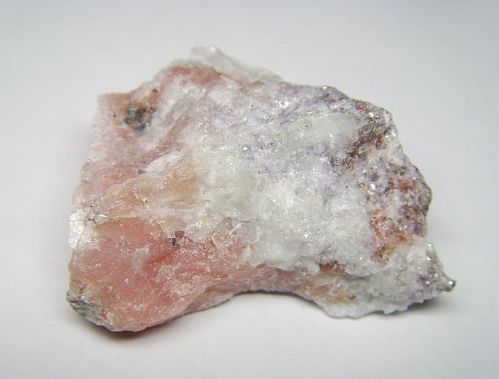Amblygonite is never brightly colored: such is its original property! Faceted amblygonite crystals by weight rarely exceed 10-15 carats – which does not prevent the stone from growing in suitable natural conditions to a mass of 200 tons!
Amblygonite is not common on retail stalls or in deposits. However, in the Ore Mountains of Germany he was found long ago. August Breitgaupt, studying samples of Saxon minerals, isolated and described amblygonite in the year 1817.
Variability is an important property of amblygonite
Translated from Greek, “amblygonite” means “obtuse.” Giving the stone such a name, A. Breitgaupt had large angles between the cleavage planes in mineral crystals. The chemical composition of amblygonite belongs to phosphates. The amblygonite formula looks like (Li, Na) Al [F | PO4], but its variability is an important property of the mineral.
In the molecular structure of amblygonite, the metals lithium and sodium are equivalent, but lithium prevails quantitatively. Ambigonite Stone is used in industry as lithium ore. A mineral with a large (relative to lithium) amount of sodium is called natroambligonite. Fluorine in the molecule can be replaced by a hydroxyl group. In this case, amblygonite is usually called montebrazite, at the place of detection of samples in France. A decrease in the amount of sodium in the composition is observed in amblygonites mined near the town of Hebron (USA). A sodium-free variety of the mineral is called hebronite.
Ambligonite has been discovered and mined in Brazil, in which oxidized phosphorus, in addition to lithium, is combined with iron. In honor of the discoverer of the mineral Elisario Tavor, the stone is called the tavorite. It is possible that in the future mineralogy will replenish with ambigonites of other compositions: the theory does not prohibit the occurrence of phosphorus oxide compounds with other elements.
Physical properties of amblygonite
Amblygonite forms short-columned crystals, often fusing into a continuous massif or into a granular drusen (brush). Ambigonite color is expressed restrained or absent altogether. In addition to white and colorless, amblygonite is yellowish, gray with blue, greenish, turquoise, violet or pink.
Transparent crystals of amblygonite are cut. Opaque and translucent amblygonites are used for the manufacture of collection items and all kinds of crafts. Fractured, but dense amblygonites with marked zoning of color can be faceted with cabochons and beads.
The cost of products from amblygonite
Ambigonite of ornamental quality is inexpensive. Jewelry ambigonites are not found in every deposit: stones come to the masters only from isolated deposits. A well-cut amblygonite comes from Namibia: this stone has a fairly saturated violet color, inherent in the best varieties of Persian lilac. Ambigonite products from Brazil are famous for their distinctive golden hue. Large gems from these deposits are rare and expensive. The most common colors of amblygonite are blurry green, yellow and blue tones. Stones of even impeccable faceting (a rarity for third-world artisans) coming from Thailand and Africa are estimated at around 10-20 dollars per carat
. Five (or more) more expensive amblygonite inserts made in Italy, Germany, Japan, and Brazil. The highest quality of processing eliminates noticeable natural defects of the stone.
Diamond luster – a rare property of Anatase stone

